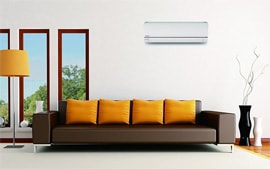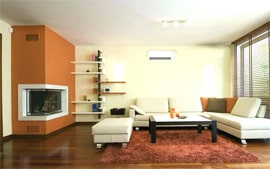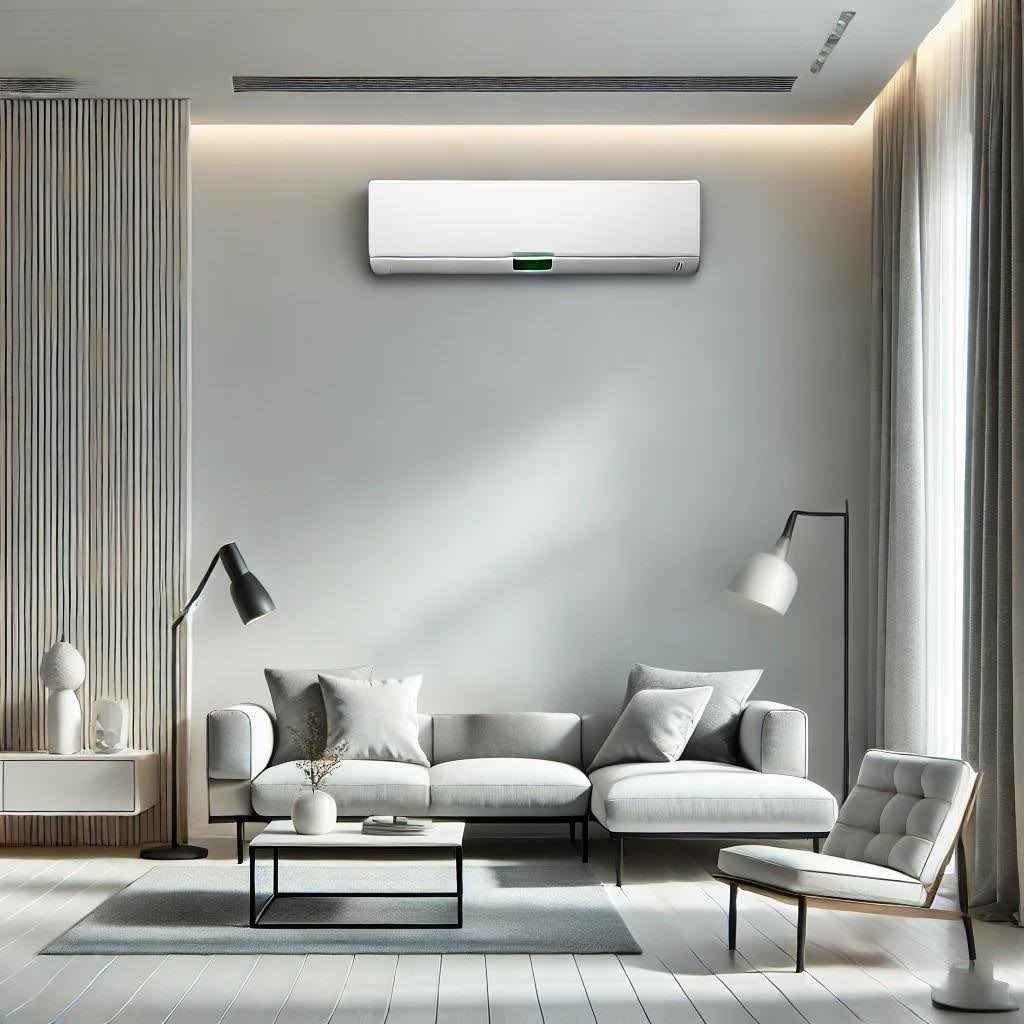No products in the cart.
Ductless mini-split heat pumps, also known as “mini splits” and “zoned HVAC,” are a type of heating and cooling system that doesn’t need any ducts to condition the air.
For this reason, ductless units can be the best solution for home add-ons and renovations that don’t have existing duct work. When extending or installing new duct systems is overly complicated or not practical, ductless units may be the ideal solution.
Larger homes that want more control over their heating and cooling may also prefer the flexibility and convenience of ductless mini-splits. By only heating and cooling the rooms that are in use, you can save a lot of energy and money. And with more control over the temperature, there will be less family quarrels over who touched the thermostat.
How Do Ductless Mini-Splits Work?
A ductless mini-split system is made up of two main parts: the indoor air handling unit and the outdoor compressor/condenser.
The indoor unit, usually suspended from the ceiling or mounted high on a wall, sends conditioned air directly into the living space. The indoor unit is directly connected to an outdoor compressor via a refrigerant line rather than a complicated duct system.
In addition to refrigerant tubing, the indoor unit is also connected to the outdoor unit with a power cable, suction tubing, and a condensate drain line.
Usually, there are multiple indoor air handling units that connect to the one outdoor unit. The multiple indoor units can be independently controlled, but they all use the same outdoor heat pump unit to either absorb or dispense heat.
A traditional central air system, on the other hand, sends air from the indoor air handling unit through a complicated series of ducts, which carry the air into your room.
How Are HVAC Zones Created with Ductless Mini-Split Units?
When you have multiple indoor air handling units, each unit is assigned to a specific area, zone, or room of your home (with the help of a qualified HVAC technician). Your HVAC contractor will help design the zones to create the most energy-efficient and convenient zones for your family.
Typically, you can have as many as four indoor air handling units (four rooms or zones) for one outdoor unit. The number of your indoor units depends on the size of your home and how much heating or cooling your home and family requires.
If you wanted, you could have one indoor air handling unit in your garage, another one for the first floor, and a third one for the upstairs level. If you spend most of the day on the first floor, you can save energy by keeping the other areas at a more energy-efficient temperature.
And since mini-split units don’t need any ducts, you won’t lose any conditioned air through the ductwork. A typical duct system loses around 20-30% of the conditioned air through gaps and cracks in the ductwork. This is especially significant if you have ducts running in unconditioned areas of the home, such as crawlspaces and attics.
Can Ductless Mini-Split Units Provide Heating and Cooling?
The simple answer is yes, they can provide both heating and cooling. The more complicated answer involved some discussion of the comparisons between Mini-Split heat pumps and more traditional heating methods, such as boilers and gas furnaces.
How Does Mini-Split Heat Pumps Work?
Like traditional heat pumps, ductless mini-splits heat pumps connect an indoor air handling unit to an outdoor compressor/condenser. Unlike a heat pump, however, the indoor air handler is directly installed into the room/zone rather than needing the extra duct work system to transfer the conditioned air into the rooms of your home.
While furnaces generate heat, heat pumps use the existing heat energy that can be found in the air using refrigerant. You may be wondering how a heat pump can provide heat when it’s cold out.
A traditional A/C unit works by removing heat from your indoor spaces and transferring the heat outdoors to your condenser unit.
A heat pump essentially reverses this process so it can remove heat from the outdoor environment and transfer that heat indoors. It uses the same principals of an air conditioner, using extremely cold refrigerant to absorb heat from the outdoor environment.
If the refrigerant is even colder than the air outdoors, heat energy can be absorbed since heat naturally flows from a warmer body to a colder body (2nd Law of Thermodynamics). Remarkably, a heat pump can absorb heat even when it is freezing outside (as low as -4 °F).
Still, the colder it gets outside, the harder your heat pump will have to work. Many people with heat pump systems report troubles with heating the home when temperatures drop below freezing (around 32 °F).
For areas that frequently experience freezing temperatures, you may want to consider a backup heating system. In places like Northern California, however, you probably only need a heat pump.
Learn more about the differences between heat pumps and furnaces and heat pumps and air conditioners.
Advantages and Disadvantages of Ductless Mini-Split Heat Pumps
Ductless mini-split systems are great choices for renovations and home additions that don’t have any existing duct work. They are also a great choice for larger homes that only require certain areas of the home to be conditioned at a time. Since each zone has its own thermostat, you can condition the occupied spaces while saving money in the unoccupied ones.
While ductless mini-splits have a lot of advantages, they aren’t necessarily right for your home. For instance, if you have a one-floor home with existing ductwork, you are probably better off with a more traditional HVAC unit.
Ductless Mini-Split Disadvantages
- Higher upfront costs than some systems (however, lower operating costs)
- Requires professional installation (higher risk for improper design/installation)
- Some people may not like the look of the indoor units
Finding a qualified HVAC contractor to install and service your mini-split system is one of the greatest disadvantages. Luckily, if you live in Northern California, you have the mini-split experts at Service Champions.
Ductless Mini-Split Advantages
- Small size
- Easy installation (hookup only requires a 3-inch hole in wall for the conduit)
- Flexibility and convenience (separate thermostat controls)
- Remote control
- Doubles as air conditioning and heating system
- Sleek, modern look
- Saves money and energy
- No ductwork
- Safer (window unit provide easy access for intruders)
- Customization options
- Longer lifespans






